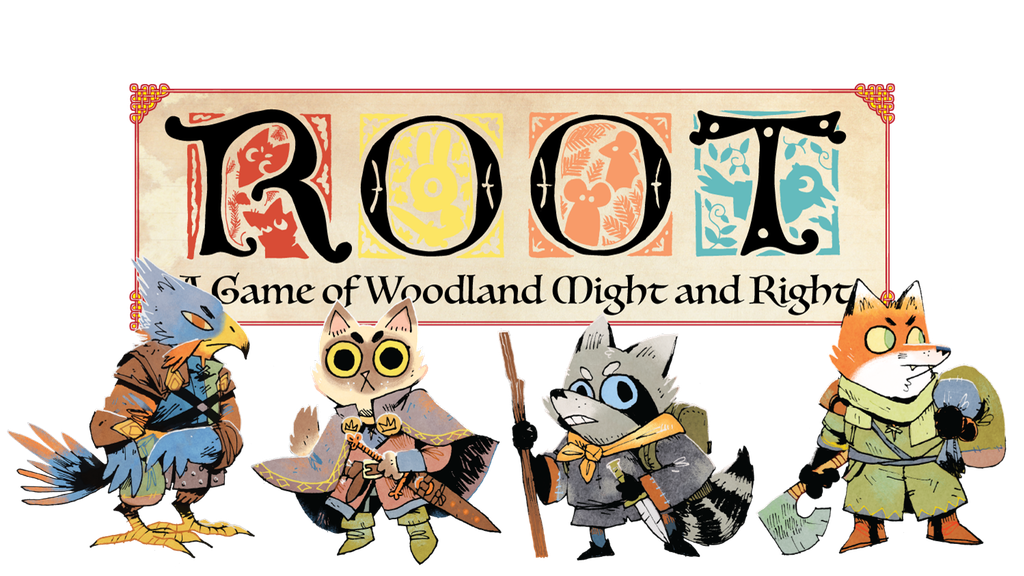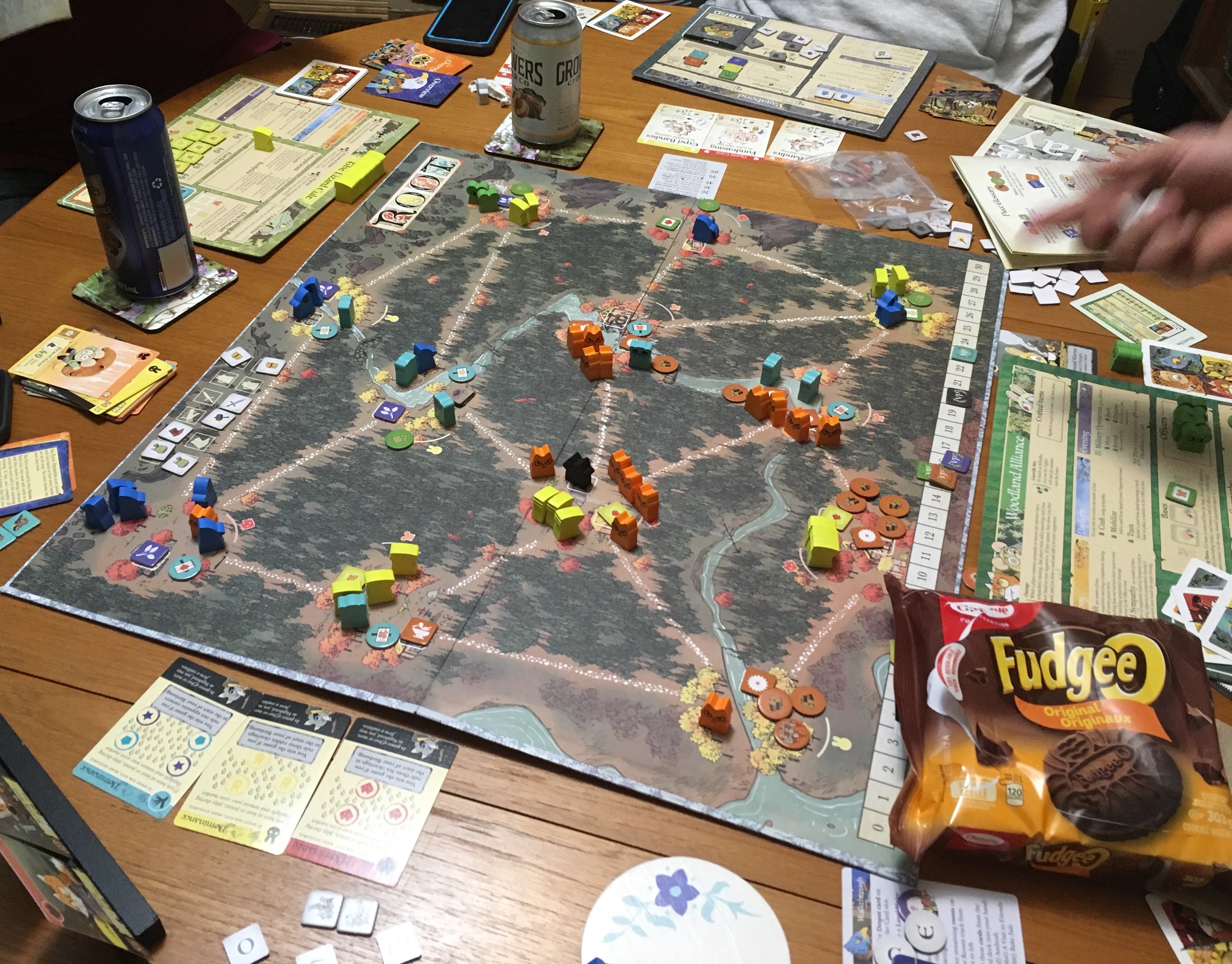
“If he (the enemy) is superior in strength, evade him. If his forces are united, separate them. Attack him where he is unprepared; appear where you are not expected.” – The Art of War
The only downside of Gamer Nation Con (our humble con, see Linda’s AAR for more), in my humble opinion, is that it lacks a hyperbolic time chamber to truly maximize gaming time. There is so much to do, so inevitably hard choices need to be made. But going with friends, or in my case an entire Canadian contingent, means I can benefit after the fact. This past weekend I got a chance to play a game I had only heard so much about: Root.
Root is an adorable game of woodland asymmetric warfare. Conventional military forces battle revanchist special forces, insurgents, extremists, private military corporations, and more. Today’s post is not a review, or necessarily focused on Root in the style of my Commander’s Assessment sub-series, but Root did inspire my look at today’s topic: asymmetry and asymmetric warfare.

Asymmetry and Asymmetric Warfare
A basic definition of asymmetry is the lack of equivalence between that which is being compared. A simple understanding of asymmetry can refer to possessed power: high power versus low power actors. However, this lack of equivalence is far too simple to be useful. Instead, one must also consider a lack of equivalence in goals, tactics, and strategies. Rather than think of conflict as a tug of war, then, it’s entirely possible to consider a competition where the competitors are not playing by the same rules, or even playing the same game!
Asymmetric warfare describes this state of affairs. It has been said that all warfare strives to be asymmetric as it’s best to place your strength against your enemy’s weakness. Conventionally, this might look like using an elite tank unit to punch through a weak spot in the enemy’s defense and wreak havoc behind the lines. However, what is generally meant by asymmetric warfare is something fundamentally different.
According to Lieutenant-Colonel McKenzie, United States Marine Corps, asymmetric warfare is “leveraging inferior tactical or operational strength against American vulnerabilities to achieve disproportionate effect with the aim of undermining American will in order to achieve the asymmetric actor’s strategic objectives.” [Source] Stripping the specific reference to America and replacing it with “a conventionally strong force,” or words to that effect, makes the idea applicable across cases. Certainly, counter-insurgency in Vietnam, and in Afghanistan and Iraq in the 2000s, come to mind. But also consider American revolutionary asymmetric warfare against superior British naval and regular army troops, and even Germanic resistance to Roman expansion. History is full of lessons for the conventionally superior loser of a game they didn’t know they were playing.
Explanatory Example: Root
The adorable asymmetric war game known as Root perfectly illustrates asymmetry. In my first game, the following factions were played:
- Marquise de Cat (Orange – Yours Truly): A conventional warfare faction that starts by controlling almost the entire board. Possesses a potentially large army and is tied to building extensive infrastructure to expand and score victory points. Seeks to control contiguous territory.
- Eeryie Dynasties (Darker Blue): A revanchist faction that starts controlling only one clearing. Potentially a military powerhouse, but leadership mechanics limit the faction’s ability to rapidly switch approaches. Seeks to control territory.
- Woodland Alliance (Green): An insurgent faction that gathers support and can strike anywhere. Starts with sympathizers and supporters, but eventually turns into a conventional force in the late game.
- The Vagabond (Black): A solo operative out to achieve their own objectives.
- The Lizard Cult (Yellow): Fanatics able to pop up across the board to stymie other factions. Destroying their forces produces martyrs to fuel their cause further. Their building provides clearing control regardless of troop count.
- The Riverfolk Company (Light Blue): A commercial enterprise offering arms (cards), transport along the river, and mercenaries. Purchasing their services fuels their actions and their victory point engine.
To cut what could be an overly-long AAR/battle report short, I’ll summarize quickly how the game went. Do note there were some rules mistakes in this game, but with the level of abstraction in my reportage these mistakes should have zero impact on the lessons learned.
As the Cat, I secured key clearing nodes, from my perspective, fairly early. I was originally concerned with the Eeryie and the Alliance. I checked the advance of the Eeryie while negotiating a limited non-aggression pact. I worked, alongside the Riverfolk Company, to stamp out Alliance support where it threatened my interests. This worked fairly well, but I did not win the game.
I did not carefully watch the building engine of the Riverfolk Company, nor did I appreciate where the Lizard Cult would seek to expand. While I was set up to secure a domination victory (based on controlling certain clearings), I was stopped by these two factions.
The Riverfolk came from behind with a powerful economic engine. While other players were fighting over territory, they built up to the point of scoring a frankly ridiculous amount of victory points. By the time widespread consensus grew to stop them, it was essentially too late. They won the game no other faction was really paying attention to.
The Lizard Cult shut down the final clearing I needed to secure a domination victory. Because of their unique abilities, and the linear warfare limitations of my faction, the Cult was able to set up in such a way to prevent the massing of my forces to smack them down. Given more time, I could mobile to clear them out, but it was not possible before the Riverfolk won their surprise victory. By not paying attention to their tactics, and honestly underestimating them, I lost a game against them I wasn’t really sure how to play.

Conclusions and Homework
What other asymmetric games can you think of? Star Wars Rebellion? GMT’s COIN series? Something else? Let me know what you played, and what you learned, in the comments below.
Until next time, class dismissed.
